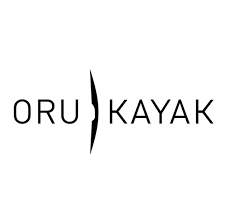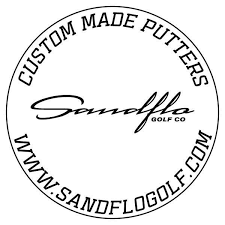Sorting
From A to Z
Deployments found: 6
In Portland, Oregon, the team at Grovemade has spent the past seven years perfecting designs for phone cases and desk objects like keyboard trays, pencil cups, and monitor stands. The woodwork that has become their trademark is finicky, difficult, and endlessly detailed.
During the design process, the Grovemade team typically goes back and forth between CAD and physical models. That process starts with sketches, cardboard models, and mockups made from blocks of foam or wood, then iterates back into the software as they add details.
The team loves how Fusion 360 combines CAD with CAM. That seamless integration makes it incredibly easy — and fast — to make changes in the design and then machine another prototype immediately using their in-house CNC equipment.
“We need to be able to make changes quickly and try it again,” the owner Tomita explains. He adds that they routinely go from CAD to CAM to machining to holding it in their hands all in the same day — “which is absolutely incredible.”
Grovemade used to work with a combination of different 3D design and CNC packages, Tomita says, “but the software was so time-consuming that we wouldn’t do [prototyping] a lot of times.” Fusion 360 gave them an all-in-one application that, besides being far less expensive, allowed them to avoid that friction and go straight to machining anytime they want. And because it’s all integrated, they don’t have to worry about migrating design changes across multiple pieces of software.
“If we change one thing, we don’t have to redo it on the other,” Tomita says. “It’s pretty massive.”
All in all, he adds, Fusion 360 “fits right in with the scale of our business”.
The iterative design approach followed by the Scriba team has dovetailed with their use of Fusion 360. It started when Craig (the owner) discovered an early version of the software a few years ago, and continued over time as the fledgling company received technical support — and encouragement — from Autodesk staff in San Francisco.
Now the larger team counts on Fusion 360’s collaboration features to maintain the master model of the product and coordinate inputs received from team members and outside experts spread across Ireland and beyond. The software has also enabled the team to test out alternative components before completing final designs. This has extended to such fine details as identifying and visualizing overhangs and areas of low draft angles needing special attention, as well as simulating applied loads to identify high-stress areas where the product’s bendability called for precise changes in the geometry of the materials.
Integrated cloud rendering has given Scriba’s designers the ability to validate many aesthetic design changes rapidly, which was particularly important when they were finalizing the material finishes on the product. They also used Fusion 360 to prepare drawings for tooling that they then shared with their fabrication partners.
Up in Alberta, Canada, motorcycle designer Dale Yamada and machinist Phil Butterworth are taking aftermarket parts for Harley-Davidsons to a new level. After they noticed that “there’s nothing cool on the market,” Butterworth says, their MJK Performance machine shop began making “cool, weird, technical, mechanical-looking parts” for Harley enthusiasts.
Using Fusion 360 for CAD and CAM
When Butterworth lies in bed and has more ideas pop into his head, he gets back up and works on designs. This is made much easier because he and Yamada use Fusion 360 on their computers both at home and in the shop, so the designs can be shared instantly.
“It so easy, so user friendly,” Butterworth says, describing Fusion 360 as “hands-down” better than other CAD and CAM programs he’s used over the years. “The design side is so easy, and then to have the CAM side right there—and 5-axis.” The last part is especially important to him, given that 5-axis milling software alone can cost tens of thousands of dollars. “If we had to do this any other way,” he adds, “we just couldn’t afford it.”
The two partners iterate quickly through designs, and Butterworth says he often likes using the branch feature to make five or six designs to try out different concepts before weeding them down. He also relies heavily on the rendering features, which makes it easy for him to “see exactly what something will look like before it’s made.”
In the bigger picture, the software “definitely speeds up the process on our end” by saving them many hours across the steps of design, rendering, and machining. “I can have something from design stage to off the machine in one hour, if I’m working hard,” Butterworth says. “Having everything in one software is perfect.”
Orange County Choppers (OCC), the focus of Discovery Channel’s long-running American Chopper, is known for its Easy Rider-style motorcycles — complete with loud V-twin gas engines. The design emerged from the mind of OCC designer Jason Pohl as he riffed on the concept of “fusion” as part of OCC’s collaboration with the Autodesk Fusion 360 team.
OCC has been making motorcycles since 1999, when company founder Paul Teutul Sr. started building custom bikes in the basement of his house. He started it for fun, but soon his unique designs attracted lots of attention. Discovery Channel took notice, and Teutul built a fabrication shop attached to his iron and steel business in upstate New York to keep up with demand.
Pohl first encountered OCC in 2004, not long after he had graduated from art school in his native Illinois. Paul was creating animations for a video game that featured OCC bikes. Teutul liked his work, and figured that the kind of 3D modeling used in the game could be translated into designs for real motorcycles.
“I’m way more of an artist than I am a geek,” Paul says, but even when he was in school he knew that he needed to learn software for the sake of his career. “I wanted to be a designer,” he says, “so I forcedmyself, kicking and screaming, to learn how to use the computer to my advantage.”
Earlier Paul met a member of the Autodesk staff who encouraged him to try Fusion 360 for a design. “I was a SolidWorks guy,” he admits. “I was terrified to switch. It’s like jumping into the deep end of the pool.” Once he started using it, though, he thought “Wow, this is incredible. It is really a magic show.” In comparison to everything he had used before, it was “cleaner” and “snappier.” As he puts it, “You don’t really wait on anything — it just happens.”
He uses the example of designing the new bike’s headlight assembly using T-splines in Fusion 360. In SolidWorks, he says, “I would probably need a solid day just to get the lofts going and the surfaces going.” The process would have involved using three different features in SolidWorks to rotate, move, and scale the surface model, then laboriously exporting everything into Mastercam to prepare the design for manufacture.
With T-splines, by contrast, you just click and drag to alter position, shape, or size. “It’s like a digital version of clay,” Paul says. He laughs when he adds, “except when you’re pushing it around it doesn’t leave thumbprints.”
Paul has found that the integrated CAM is much easier in Fusion 360. “I use it every day now,” he says. “It’s a game changer for me. I just have more power to take a concept, model it up, and then take it to a CNC machine.” He and the OCC machinist have also used Fusion 360 to export DXF files for use on their water jet machine to make some of the metal parts.
The very first thing Paul tackled in Fusion 360 was the entire body assembly for the electric bike. He laughs at his own ambition when he adds, “I didn’t start off and make a kickstand, know what I mean?”
Wanting to create a bike that would be totally different, he lit upon the idea of making the new design a true “fusion” in every sense. Unlike the long-forked choppers OCC usually makes, this bike is an urban“hopper” — lightweight and with lots of ground clearance. Using an electric motor allowed Paul to eliminate the exhaust system and V-twin engine of other OCC designs, which “opened up a whole new world of possibilities.
In line with the “fusion” idea, the bike incorporates components inspired by other types of vehicles: the aluminum front end of a sport bike, the gas shocks of a snowmobile, and the rear sprocket of a motocross racer, along with high-durability plastic elements and a few key parts in titanium.
“It was something new, fresh for us to do,” Pohl says, adding that every part of the new design came out of Fusion 360.
Given the success of the project, Teutul wants the team to use Fusion 360 to design a new line of aftermarket parts for Harleys. Pohl describes Fusion 360 as “a new weapon in my arsenal here.”
Here’s the problem: You want to hit the water in a kayak — but where are you going to store the thing when you’re not using it? And how are you going to transport such a long boat from home to the water?
Oru Kayak has solved that challenge with a line of tough, cleverly designed boats that fold up into a package the size of a small suitcase — one you can stow in the trunk of your car or sling over your shoulder. It’s all part of their vision “to make paddling more convenient, fun, and freeing for everyone.” Their focus has shifted from early-stage design toward the specific challenges of engineering and manufacturing. The point is to optimize both the user experience and the efficiency of production.
“It starts with design philosophy,” Willis says. “You have to be willing to make guesses, not get too attached to ideas, and change on a dime based on user feedback.”
Fusion 360 has been integral to streamlining that process. “We began by using Fusion 360 to roughly model the kayak and parts, to visualize how pieces came together,” the company adds, “but we were still using CNC and other technologies to make the parts. Now, we’re revising many of thekayak parts with new injection molds” using Fusion 360.
“We are making the individual parts more efficient to manufacture, stronger, and more consistent with the overall aesthetic of the product — fluid, clean, and simple,”Willis says. “For combining these elements, it’s been crucial to have software that’s rigorous but allows for flexible and intuitive sculpting in three dimensions.”
The level of detail required can seem exhausting, but the company believes the payoff is worth it.
In the town of Trollhättan in southwestern Sweden, engineer Johan Sandflo spends his days managing his precision machining business. At night, he perfects designs for SandFlo Golf‘s custom putters. He’s come to rely on Fusion 360 to help him follow both of those passions.
Sandflo started using Fusion 360 in the shop late in 2014 after he stumbled across it on YouTube. Once he downloaded a trial version, it didn’t take him long to get hooked, especially considering the responsiveness of the Autodesk team and user community online. “I tried it for a few weeks,” he says, “and haven’t looked back.”
In the job shop, CAM reigns supreme, especially for setting toolpaths. Sandflo particularly likes Fusion 360’s “awesome” adaptive clearing functionality for roughing out machined parts. In the past he’s used about ten different CAM applications, most recently a combination of Mastercam and OneCNC, but found that none of them worked as well: “Nothing compares to Fusion 360 for the kind of jobs that I do.”
When getting started with Fusion 360, Sandflo explains, “I went down the CAM side first,then kind of discovered the CAD side.” The CAD features make it simple for him to streamline his machining work, for example by taking a customer drawing and turning it into a proper CAD model.
Sandflo says he believes that “I have an advantage over other companies my size when I use Fusion 360.” In part that comes from the software’s functionality and cloud-based approach. But he also says that the thinking and interactions around the software are a refreshing departure from the rigid enterprise model that typically prevails. “It’s a modern take on it,” he says. “It’s not like anything else in the industry.”
And then there are the costs. Not only is Fusion 360 much cheaper than comparable programs, but you don’t have to pay extra for training. “It’s amazingly affordable,” Sandflo says, adding, “Why would you use something that’s ten or twenty times more expensive? I can invest that money elsewhere to make the business grow.”
Even better, the software has allowed Sandflo to extend his passion for golf. It makes him happy “to get a few hours in with friends, have a good laugh,” he says.
“Being a golf nerd,” he adds, “it’s always fun [tinkering] with equipment.” He began to look online for clubs that were “exotic, more personalized,” and then realized he could make his own. As he puts it, “I have the knowledge to do something like this myself. I have the machines. Why not start modeling something, see what happens?”
Before he discovered Fusion 360, it was slow going. He didn’t have enough CAD skills to do what he wanted to, and found the combination of SolidWorks and Mastercam unwieldy. Then everything changed. “When I found Fusion 360, that was the turning point,” he says.
“To make the changes — the small iterations, the small tweaks — it is so easy,” he adds. Fusion 360’s cloud-based approach is especially useful for him because it lets him squeeze in design work whenever he has time. “For me as a small business owner,” he says, “the ability to work at home at night when the kids are asleep is second to none. It’s so easy and convenient, and you have all the files available at a mouse click. . . . When I get to work the next day, it’s all done. So I can keep the machines turning.”
Using Fusion 360, he’s able to share putter designs with customers via a simple URL. Even if they’ve never used the software, it’s easy for the customer to view and rotate a 3D model of the latest design in any browser. “My customers have enjoyed that very much,” he says.






